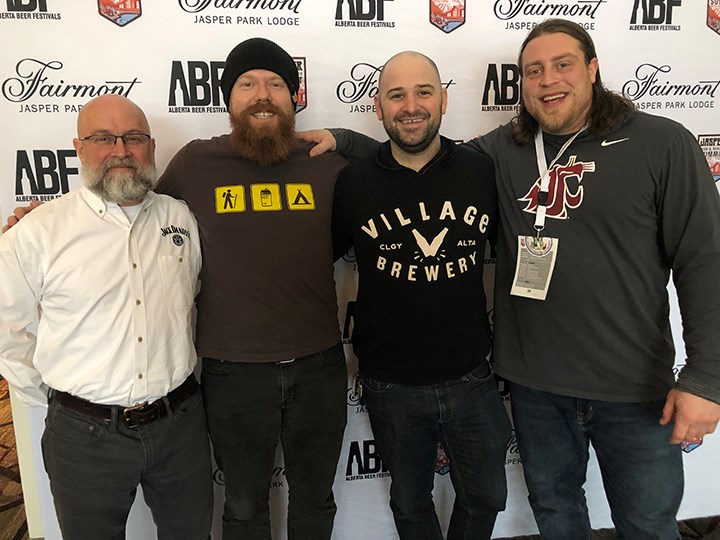
Craig Gilbert | [email protected]
In craft brewing, your ID can be as important as your ABV.
Bearhill Brewing director Phil Brian said surveys show 40 per cent of drinking age adults in North America have consumed craft beer in the last six months, but only about 15.3 per cent of beer consumed in Alberta can be described that way.
“So when people ask me, ‘are we at saturation?’ Like, hell no,” he said during a panel over Sunday brunch at the Fairmont Jasper Park Lodge Feb. 3. See related photo spread on pages 8 and 9. “We’ve got more than double the runway to go.”
The talk capped off the second Jasper Beer and Barley Summit. Brian said he sees that “big” gap as ripe for the picking for current and future microbrewers who can keep an ear to the ground.
“Those macro-brewers make fantastic beer,” he said afterward. “And so they have the resources, the history and the marketing … to do that, so the one thing we can do as craft brewers is stick close to community and represent those roots. We can do that better than anyone that’s selling two million hectolitres just in this province.”
Bearhill owns Jasper Brewing Co., Last Best Brewing in Calgary, Wood Buffalo Brewing in Fort MacMurray and Banff Ave. Brewing.
“Our founders were born and raised Jasperites,” Brian said. “The business was only able to survive because they had the support of Jasper. It’s a full-circle relationship. That’s enabled us to grow beyond just our town into others. The opportunity for craft brewers is always to have meaningful relationships with other people in the communities where we operate. That’s where all the growth in craft beer is.”
Skyler Cesarone of The Lagunitas Brewing Co., which is based from offices in California and Chicago, represents a craft import in Canada. He said each province had to be treated like a different country in terms of consumer tastes.
“We have 30 beers in the States, two SKUs in Alberta, and an IPA draft in Ontario and BC,” he said. “It brings me back to what it used to be like in the States. You get to start from scratch and bring it up organically.”
Jeremy McLaughlin of Village Brewery in Calgary said they’ve felt “a little bit of” pressure as more variety floods the market.
“Tap lines are certainly harder to get,” he said. “There are more people after those rotating taps around the city and the province. But at the same time, we’re also talking about how you stay relevant. Even if there are a lot of breweries in the market, it’s not impossible to survive. It’s natural selection type thing, survival of the fittest. So staying involved in the community can help you get around the crunch from all the breweries in the market.”
He said there’s “lots of opportunity” in Calgary.
Brian said Bearhill is trying to grow while staying true to their roots.
“Now the biggest challenge for us is how to be relevant in multiple communities where we might not be from,” he said. “We want to play at both ends. We want to be relevant locally and we also want to take the stories, the beers and brands we’re developing in our local communities and showcase them to a bigger audience.”
They’ve been distributing Crisp Pils and Jasper the Bear across the province for about 18 months.
“There’s been a great response to this town and (consumers) want a piece of it,” he said. “But for new entrants in the market, and why I feel there’s still room: there’s lots of towns that need a brewery and plenty of communities that would love to (have one).”



